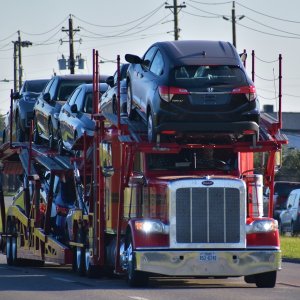Good Times Ahead for Mexico Heavy Vehicles

STORY INLINE POST
Q: What challenges and opportunities will Mexico’s heavy-vehicle segment encounter after USMCA?
A: Mexico negotiated USMCA from a defensive position, focusing on retaining as much of the success it had achieved in the development of an automotive industry. The country is the sixth-largest producer and fourth-largest exporter of heavy vehicles worldwide and the No. 1 exporter of tractor-trailer units worldwide. Through the negotiation of NAFTA and later USMCA, the US government aimed to recover part of the automotive industry that had moved to Mexico in the last decades, but that strategy focused more on the light-vehicle segment.
ANPACT worked with the Mexican authorities, and with its US counterpart, to differentiate both sectors during the negotiations. Our goal was to establish different transition times for the light and heavy-vehicle industries to comply with the new rules of origin defined in the new agreement. As a result of this strategy, truck and bus OEMs will have seven years to comply with new standards, which will be parallel to the introduction of new emissions standards in 2024 and 2027.
All our members are expected to comply with the new regional content requirements. We believe these rules are acceptable and within reach for Mexico-based OEMs but the country needs to invest in the development of a local supply chain to maintain its growth momentum.
USMCA’s ratification by all concerned parties will offer certainty for more companies to invest in Mexico. ANPACT expects that investments for final assembly will continue landing in Mexico. However, salary requirements will force OEMs to source engines, transmissions and batteries from high-salary countries, which will harm Mexico’s attractiveness for the production of those systems. USMCA will not necessarily lead to wage increases in Mexico. Instead, it will shift production of critical components to the US and Canada.
Q: What are the most important changes in regional content requirements that USMCA establishes?
A: USMCA requires heavy-vehicle OEMs to increase their regional content from 62.5 percent to 70 percent and to source 45 percent of that content from high-salary regions. This means good and bad news for Mexico because while USMCA will provide new growth opportunities, some of them will stay in the US and Canada. There is room for heavy-vehicle OEMs to add more Mexico-made components as long as they are not engines, transmissions and advanced battery packs.
Salary content requirements will be met in three ways. Companies that are producing engines, transmissions or advanced batteries in high-salary regions have already covered a 5 percent content requirement. If they have R&D operations in these regions, they have another 10 percent covered. The remaining 30 percent can be met with normal manufacturing operations with high salaries. As a result, the main area of opportunity for the Mexican supply chain is in hogging the other 55 percent.
Q: How will USMCA impact used heavy-vehicle imports from the US to Mexico?
A: USMCA, as well as NAFTA before it, allows for the import of used trucks and buses to Mexico. However, a decree published by the Ministry of Economy requires these trucks and buses to be 10 years of age or younger and to pay a 10 percent tariff to enter the Mexican market. The authorities need to monitor compliance of this norm because truck documents are often forged. ANPACT is in favor of importing used trucks inasmuch as these units are as new as possible. We are aware that the least safe and most polluting vehicles tend to be the oldest.
Q: How did Mexico’s heavy-vehicle industry fare in 2019?
A: Mexico is expected to close a solid year in terms of production and exports but domestic sales are likely to drop. The country’s heavy-vehicle segment delivered positive results in these key indicators during the first ten months of the year. Production and exports of heavy units increased by 19.8 percent and 19.7 percent compared to the same period of 2018, respectively, powered by rising demand for new trucks in the US market. In terms of sales in the Mexican market, the heavy-vehicle segment has performed well, but ANPACT expects this trend will be short-lived. While in April 2019, Mexico’s wholesale market grew by 15.1 percent and retail sales by 11.7 percent, powered by changes in emissions regulations, 2019 annual figures show wholesale sales diminished 3.8 percent compared to 2018 while retail sales increased 1.8 percent.
The country’s transportation industry faces challenges related to truck robberies, rising fuel prices and vehicle cost increases as a result of new technologies and a volatile exchange rate. These factors would usually disincentivize fleet renewals. The enforcement of NOM-044, however, dictates that all trucks and buses produced in Mexico or imported to Mexico must meet Euro V or EPA 7 emissions standards starting July 2019. This has forced transportation companies to anticipate truck purchases. The pre-purchase effect will fade once this norm is enforced. ANPACT projects that Mexico’s annual heavy-vehicle sales will drop 5 percent in 2019.
























